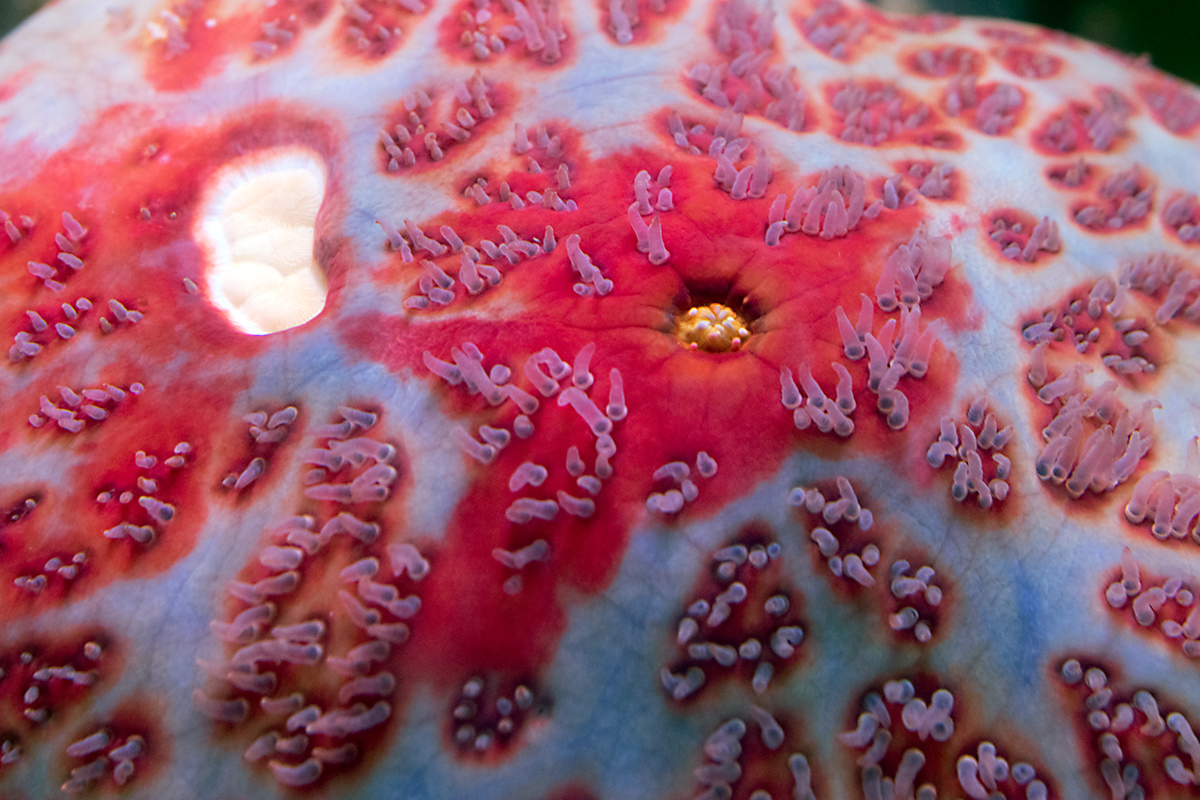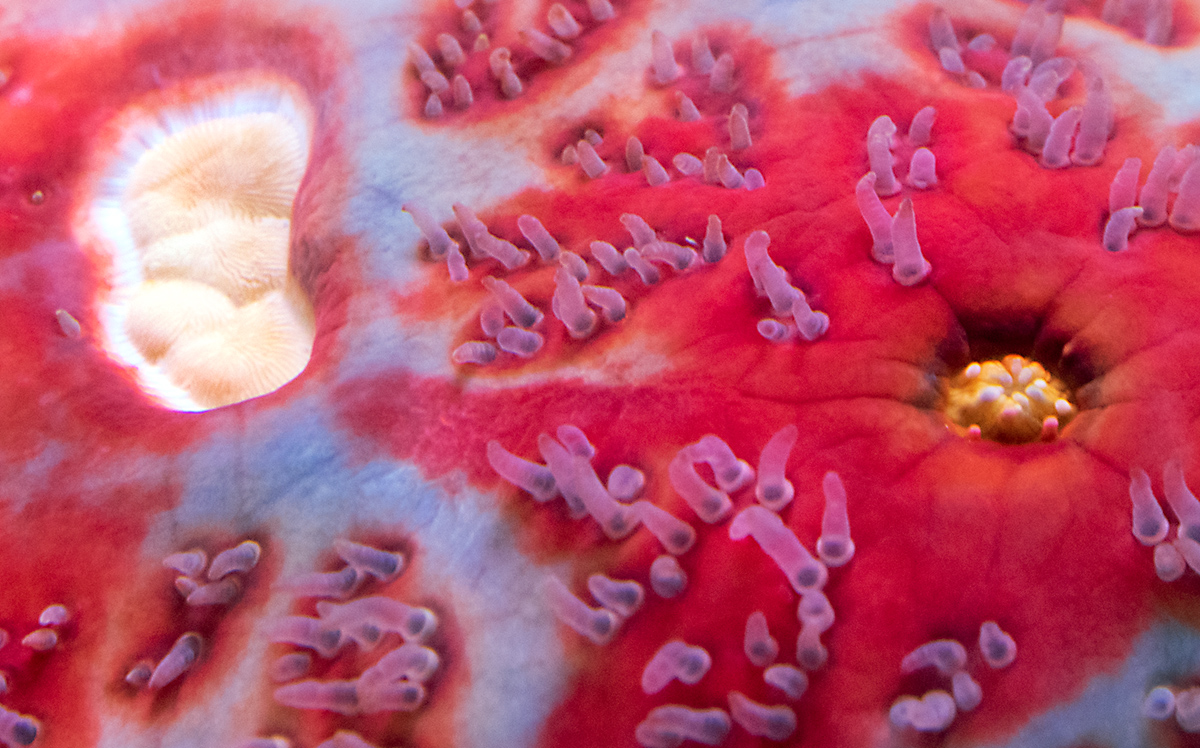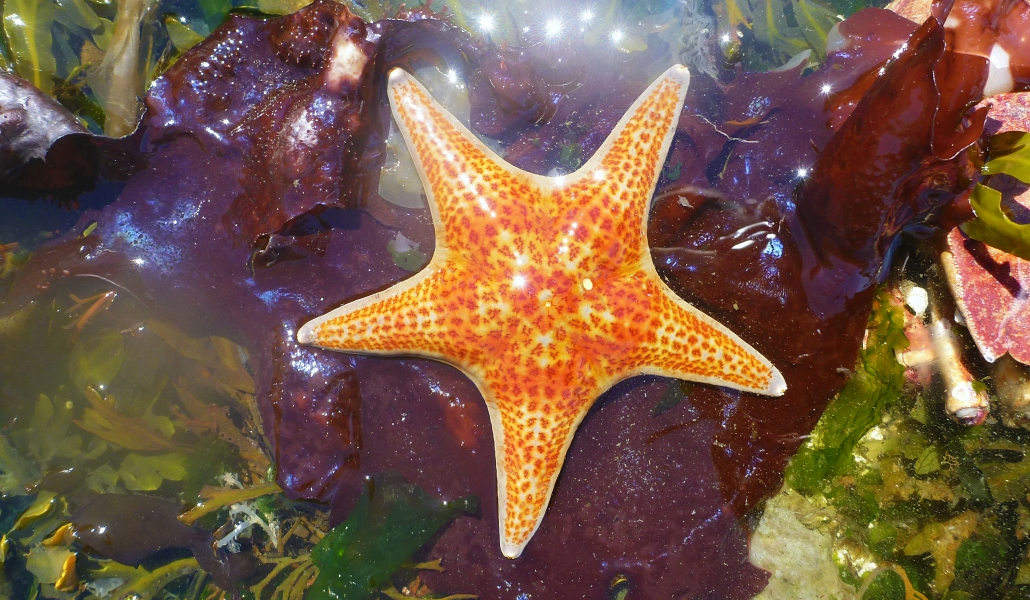Author: Meaghan Claughton
Photos by D. Young
Scientific name: Dermasterias imbricata
Size: Up to 30cm
Identifying Features: The Leather Star (also known as the ‘Garlic Star’) is a five-armed echinoderm. The Leather Star is often a light grey-blue in colour with red markings and smells faintly of garlic.
Habitat: The Leather Star is found from the central coast of Alaska to northern Mexico. They generally live among the rocks in low intertidal zones, but can be found up to 300ft deep.

A Leather Star at low tide at Prevost Island, British Columbia

A close up of a Leather Star (Dermasterias imbricata) showing the finger-like papillae that act as gills, an anus on the right, and the medreporite, or sieve plate, on the top left.

Life Cycle: Sea stars can reproduce sexually and asexually. They reproduce asexually when a part of their body, such as their arm, becomes separated. The starfish limb can grow into a new sea star, as long as a part of the central body portion is attached. In sexual reproduction, a sea star’s eggs are externally fertilized by a male sea star’s spermatozoa. The fertilized eggs develop into swimming larvae categorized into two groups: Bipinnaria and Brachiolaria. These larvae use cilia to move and eventually settle to the ground when growing into adults.
References
Acadia Oceanside Meadows Inn. Echinoderms, Acadia Oceanside Meadows Inn, Downeast Maine Bed and Breakfast. Retrieved January 22nd, 2012 from www.oceaninn.com/the-nature-preserve/echinoderms/
Cowles, Dave (2005). Dermasterias imbricata, Invertebrates of the Salish Sea. Retrieved January 11th, 2012 fromwww.wallawalla.edu/academics/departments/biology/rosario/inverts/Echinodermata/Class%20Asteroidea/Dermasterias_imbricata.html
Jamison, David W. Leather Star Dermasterias imbricata Explore Puget Sound habitats and marine life with David W. Jamison. Retrieved January 7th, 2012 fromwww.pugetsoundsealife.com/habitats+sealife/Leather_Star.html
Lamb, Andy and Hanby, Bernard P. (2005) Marine Life of the Pacific Northwest: A Photographic Encyclopedia of Invertebrates, Seaweeds, and Selected Fishes
Harbour Publishing: Madeira, British Columbia
North Island Explorer. Leather Star: Dermasterias imbricata, North Vancouver Island Explorer. Retrieved January 7th, 2012 from northislandexplorer.com/echinoderms/leatherstar.htm
(April 6th, 2010) What Eats Starfish? What Eats? – A Food Website for Kids. Retrieved from:www.whateats.com/what-eats-a-starfish


